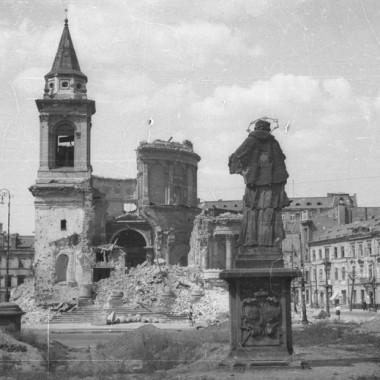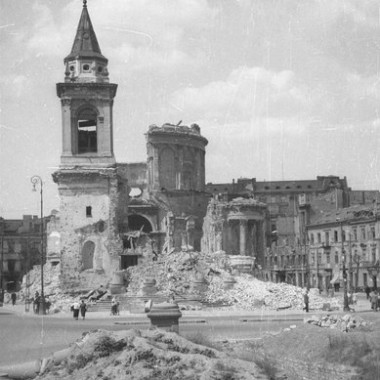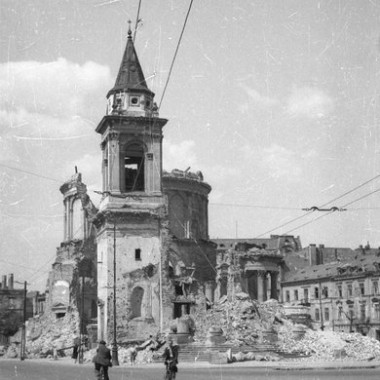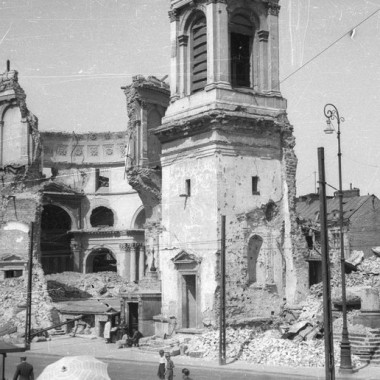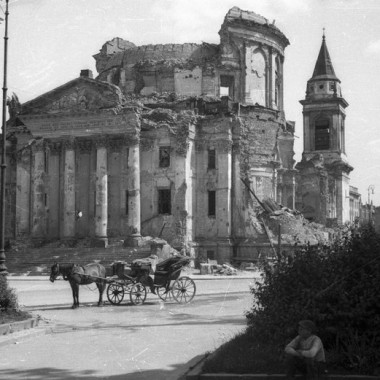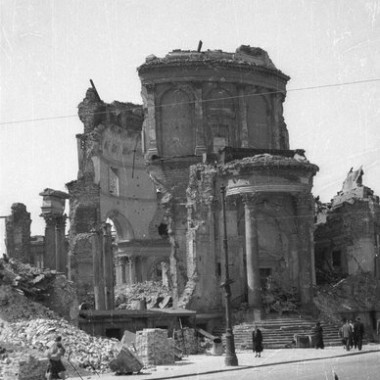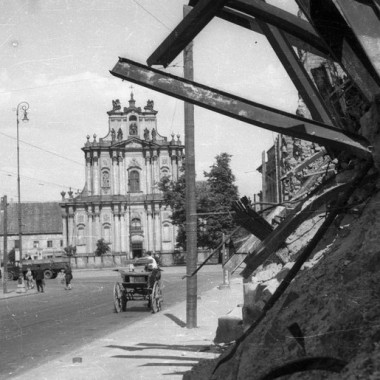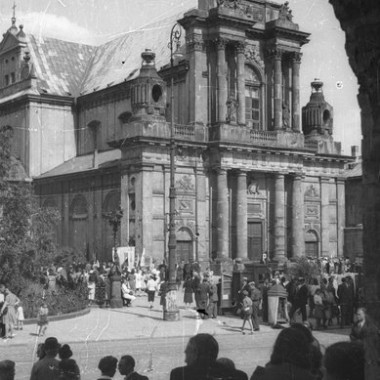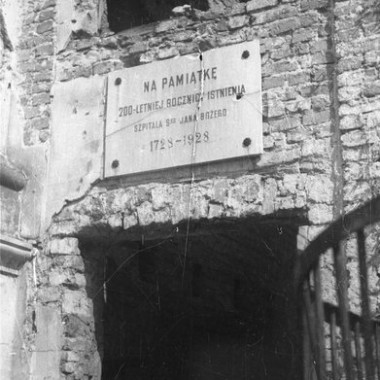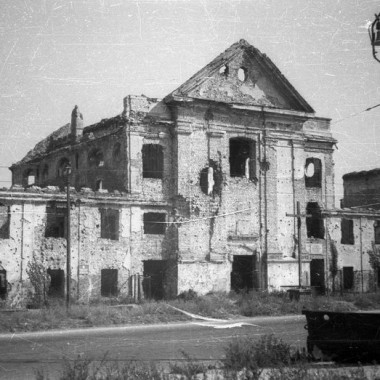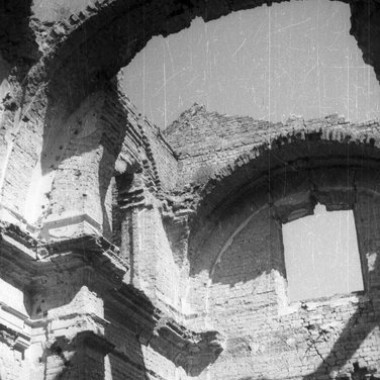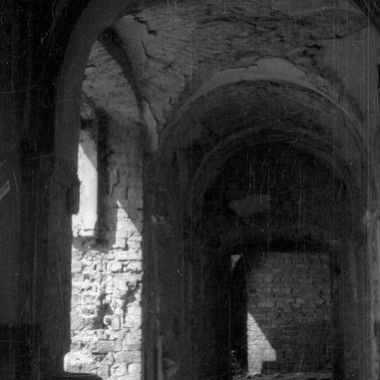Karol Pęcherski was born in 1885 in Wieluń. His father ran a photo studio and Karol himself joined the guild of photographers in 1909. His photographs were published in newspapers beginning in early 20th century. A former legionnaire, the author often portrayed Marshall Józef Piłsudski. He also took reporter and art photographs. His large-format photograph titled "Baby" won a photographic competition in 1925. In 1923, he married his wife Maria and their only daughter Irena was born in the same year. He photographed his family often and with a sense of humour. In 1926, Pęcherski opened a photo studio at 57 Nowy Świat Street in Warsaw, and beginning in 1930 he ran a laboratory of amateur work and a photo store at 2 Mazowiecka Street, signing his works as "a modernist photographer". It was at that latter location that the outbreak of the Warsaw Rising met him. Returning to the city as early as February 1945, he started working as a documentary photographer at the Historic Architecture Department of the Capital Reconstruction Bureau, and then at the Conservator Restorer Office, where he worked until his death in 1951. He created a tremendous documentation of the conservation status of Warsaw's buildings, primarily historic ones, immediately after the war.
Post-war photographs of Warsaw taken by Karol Pęcherski comprise a consistent documentation of the city's buildings after the end of World War II. Because his photographs were taken on order of the Historic Architecture Department of the Capital Reconstruction Bureau, the collection is dominated by images of valuable and historic buildings Here, we present a selection of 1,220 most interesting ones. Although in his photographic trips the author visited virtually all areas of Warsaw, most of the photographs were taken in the Old and New Town and along the Royal Route. Interestingly, the author immortalised also those buildings that had survived the war but were later intentionally demolished during the reconstruction of the city. We can see, among others, the now demolished Walickis Palace at Senatorska Street, Badenis Palace, Taubenhaus' Townhouse, Przeździeckis Mausoleum and examples of the romantic architecture of early 19th century: the church porch of the Visitation of the Blessed Virgin Mary and the neo-Gothic outbuilding at St. Hyacinth's Church in the New Town.





